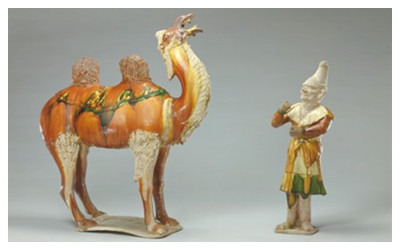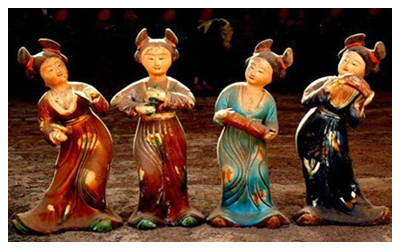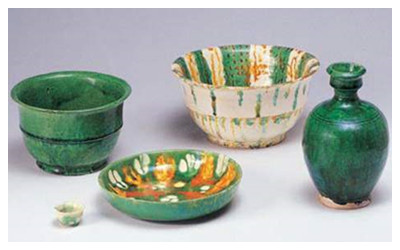Skype: neodalle-travel
Tel: +86 135 7447 2266
E-mail: sales@visitaroundchina.com


Tang Tricolor Pottery, also called Tang San Cai, is a kind of handmade glazed ware of exquisite craftsmanship created in the Northern and Southern Dynasty (386-589) about 1,400 years ago.
 During the Tang Dynasty (618-907), the production of Tang San Cai reached its peak, which is part of the reason the pottery got the name of Tang San Cai. It well reflects the high standards of ceramic art as well as the magnificent and luxurious lifestyle of Tang Dynasty society. It is known for its vivid design, flamboyant color and luster, and rich life ambiance. Luoyang, named the eastern capital in ancient times, in Henan Province was the home of Tang San Cai, and most of unearthed Tang San Cai was found in Luoyang.
During the Tang Dynasty (618-907), the production of Tang San Cai reached its peak, which is part of the reason the pottery got the name of Tang San Cai. It well reflects the high standards of ceramic art as well as the magnificent and luxurious lifestyle of Tang Dynasty society. It is known for its vivid design, flamboyant color and luster, and rich life ambiance. Luoyang, named the eastern capital in ancient times, in Henan Province was the home of Tang San Cai, and most of unearthed Tang San Cai was found in Luoyang.
Tang San Cai is a poly chrome handicraft with yellow, green, and white as its major tones. It is fired with lead glaze and presents a harmonious complex of varied colors, deep and light. The process is complicated: first, bake the ready mode in kilns until the temperature reaches 1,100°C, then take it out and apply glaze on it; bake it again in kilns at a temperature of about 900°C.
 Tang San Cai items that have been unearthed include horses, humans, and even pillows, and camels, of which the pottery camel is one of the best. Its head rises high, as if telling stories about merchant caravans along the Silk Road in the remote past and the prosperity of the Tang Dynasty.
Tang San Cai items that have been unearthed include horses, humans, and even pillows, and camels, of which the pottery camel is one of the best. Its head rises high, as if telling stories about merchant caravans along the Silk Road in the remote past and the prosperity of the Tang Dynasty.
Being the gem of ancient Chinese art, Tang San Cai absorbed the advantages of Chinese painting, sculpture and stone carving. It features fleshy figures, regular and exquisite technics, compact carving traces, and smooth lines, indicating the high-level of the craft reached in the Tang Dynasty. Tang San Cai is mainly divided into pottery tomb-figures and daily commodities.
After the founding of new China, specialized institutions have been set up to study the technics of making Tang San Cai, which has boosted the development of the craft. At present, Luoyang Tang San Cai is exporting to more than 50 countries and regions in the world.
 Ask Questions ?
Ask Questions ?